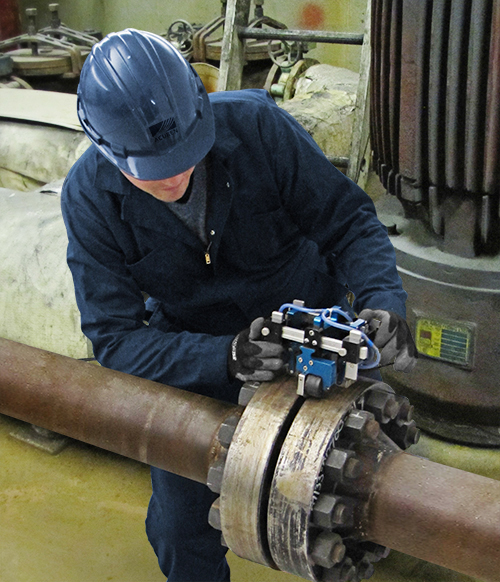![]()

 In the unforgiving environment of oil and gas operations, where unsafe practices can escalate into costly failures, flange face erosion and corrosion emerge as critical threats. These pervasive issues strike at the very heart of refinery infrastructure, turning minor imperfections into major liabilities. With each flange connection serving as a pivotal link within the vast network of pipelines, any compromise in integrity can lead to disastrous leaks, forcing unplanned downtimes that translate directly into lost revenue. This case study explores the relentless battle against these hidden dangers, highlighting innovative strategies that ensure not only the safety and operational efficiency of facilities but also the continuous flow of energy upon which global markets depend.
In the unforgiving environment of oil and gas operations, where unsafe practices can escalate into costly failures, flange face erosion and corrosion emerge as critical threats. These pervasive issues strike at the very heart of refinery infrastructure, turning minor imperfections into major liabilities. With each flange connection serving as a pivotal link within the vast network of pipelines, any compromise in integrity can lead to disastrous leaks, forcing unplanned downtimes that translate directly into lost revenue. This case study explores the relentless battle against these hidden dangers, highlighting innovative strategies that ensure not only the safety and operational efficiency of facilities but also the continuous flow of energy upon which global markets depend.

Corrosive agents like seawater, acids, and hydrogen sulfide accelerate corrosion, especially in the crevices between flange faces. This leads to hazardous leaks and requires costly shutdowns for inspections and repairs (Enerpac Blog).
Traditionally, inspecting these joints involves disassembling flanges for visual checks—a labor-intensive process that causes significant downtime and resource use.
With each flange connection serving as a pivotal link within the vast network of pipelines, any compromise in integrity can lead to disastrous leaks, forcing unplanned downtimes that translate directly into lost revenue.
To address this, an oil and gas leader sought Acuren’s help in finding a reliable, non-invasive inspection solution that would minimize operational disruptions. This case study explores how Acuren provided innovative technologies to detect corrosion while maintaining refinery operations.

| SOLUTION | ||||
|---|---|---|---|---|
| Acuren addressed the challenges of flange face corrosion with a forward-thinking strategy led by subject matter experts. Utilizing Phased Array Ultrasonics (PAUT) for multi-angle inspections, Acuren’s Eclipse Scientific team developed innovative software simulations to refine inspection techniques before physical trials. These methods were then tested on samples with known defects, leading to the creation of the market’s first comprehensive Flange Scanning solution.
Although advanced, this solution required continuous refinement, driven by field technicians’ ingenuity and real-world experience. Acuren introduced new frequencies, wedges, and scanning tools, making the solution more versatile and practical. By using non-specialized transducers and wedges, the team kept costs low, democratizing the technology. The result was a scalable program that ensured technician competence, accuracy, and reliable data. This iterative process cemented Acuren’s leadership in cost-effective inspection solutions for the oil and gas industry. Key contributors included John Lockheart, Matthew Prowse, Dr. Brent Zeller, and Brian Douresseaux. |
||||
| WHY ACUREN? | ||||
|---|---|---|---|---|
| Cost savings and safer facilities. Only recently Acuren’s flange face PAUT solution saved a client over $4 million, with a total inspection cost of just $12,000.
Previously, this client would decommission equipment and shut down processes just to investigate potential issues. Now, with their adaptation of Acuren’s enhanced PAUT approach, they can obtain accurate results without interrupting their operations. This not only reduces costs but also minimizes the risk of safety and environmental incidents and allows them to be in control and plan for the next outage, prioritizing areas of concern. |
||||
Acuren’s innovative approach to inspecting HF Alky and other flanges has set industry benchmarks, delivering accurate, reliable data with a high probability of detection (POD). Their use of specialty transducers, customized wedges, and advanced scanning techniques has strengthened client confidence and raised inspection standards.
Acuren continues to refine imaging tools like Total Focus Method (TFM) and Phase Coherence Imaging (PCI) to enhance their offerings. Contact Acuren today to achieve the highest standards of safety and efficiency in your operations.



